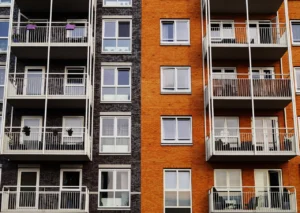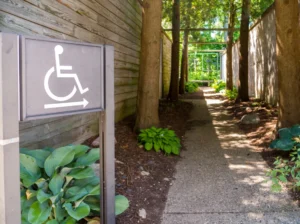This Residential Sector Is Poised To Be Rid Of An Ugly Stereotype — And Solve A Big Problem
After a decades-long slump in demand, and even longer as an unloved segment of the residential industry, manufactured housing is experiencing a surge in demand — and seeing a slow but steady change in how it is perceived.
 It isn’t a coincidence that the changes come at a time when conventional housing is unaffordable for more Americans than ever. Manufactured housing, with its lower construction costs, is being seen as an increasingly viable affordable housing option, not only by advocates and the industry, but also some policymakers.
It isn’t a coincidence that the changes come at a time when conventional housing is unaffordable for more Americans than ever. Manufactured housing, with its lower construction costs, is being seen as an increasingly viable affordable housing option, not only by advocates and the industry, but also some policymakers.
“Manufactured homes have traditionally been viewed as a rural housing option, but many urban and suburban communities are now turning to them to help ease the affordable housing crisis,” said University of Maryland professor Casey Dawkins, whose specialty is urban studies and planning.
Economies of scale in design, assembly and quality control mean that manufactured housing units can be produced at a much lower cost than traditional built-in-place single-family homes, he said.
“Evidence shows that these lower costs are passed on to housing consumers,” Dawkins said.
One caveat is that manufactured homes are unlikely to have much of an impact on affordability in very expensive markets since the cost of land is a major factor in high prices in many places.
Still, for markets with more modestly priced land — typically noncoastal smaller cities, large towns and rural areas — the price differential can be quite significant, Dawkins said.
New manufactured homes represent the most affordable form of detached housing that can currently be produced, Texas Manufactured Housing Association Vice President of Operations Rob Ripperta agrees because they can be built at a significant discount per square foot compared with traditional site-built homes.
An Urban Institute study found that manufactured housing is 35% to 47% less expensive per square foot than either new or existing conventional houses. Moreover, 71% of residents cite affordability as the key driver for choosing manufactured housing, according to the Manufactured Housing Institute.
Price isn’t the only consideration.
Low housing inventory in many markets is driving more buyers to look at manufactured housing, Nicole Bachaud, an economic analyst with Zillow, told The Washington Post.
The perception of manufactured housing is also changing.
“If you look at them, and tour them, it’s evident that the quality is really stepped up in recent years,” Texas Real Estate Research Center Research Economist Harold Hunt said.
The “trailer” stigma still lingers, Hunt said, but it is gradually ebbing as the higher-quality product comes to market and is located in a larger diversity of places. Some upper-end manufactured housing — still cheaper than conventional housing — is virtually indistinguishable from conventionally built houses, with such features as permanent foundations, pitched roofs with shingles, porches and garages.
“The big battle has always been the stigma, and I think a lot of people don’t really get over that until they actually tour the product,” he said. “But as affordability options become tighter for more people, that’s going to happen more often.”
Also, the common image of manufactured homes is that they are creatures of communities specifically devoted to them. That is still a large part of the sector, but in fact, most units end up elsewhere.
Of the manufactured homes delivered nationwide in 2018, the most recent year for which data is available — only 37% of them were placed in manufactured housing communities, which includes parks, courts or subdivisions, according to the Department of Housing and Urban Development.
The rest are placed in more conventional lots, either on piers or slab foundations.
One popularly held notion is still true. New manufactured homes do still tend to be a Southern phenomenon, with 61% of production in 2018 going to that part of the country, while 16% went to each of the Midwest and the West, and 7% to the Northeast, according to HUD.
The surge in demand is a marked change from recent years.
Manufacturing last peaked in the late 1990s, when over 300,000 units were shipped most years, according to Manufactured Housing Institute data. In the years after 2000, most years saw far fewer than 100,000 units ship, especially after the global financial panic.
Restrictive zoning and difficulties in obtaining financing helped restrain manufactured housing production through much of the 21st century so far, the Urban Institute says.
But in 2021, the number of units shipped broke 100,000 for the first time since 2006, at 105,775 units, up from just over 94,400 in 2020 and 94,600 in 2019.
 Despite rising interest in manufactured housing, legal obstacles remain. Zoning restrictions take several forms, according to a 2020 Fannie Mae report. Some municipalities prohibit manufactured homes outright or at least exclude them from single-family residential zones, while other zoning restrictions impose minimum lot-size requirements.
Despite rising interest in manufactured housing, legal obstacles remain. Zoning restrictions take several forms, according to a 2020 Fannie Mae report. Some municipalities prohibit manufactured homes outright or at least exclude them from single-family residential zones, while other zoning restrictions impose minimum lot-size requirements.
Housing advocates and policymakers are pushing back against these obstacles in some places.
“Today’s manufactured homes definitely are not the manufactured housing of old. They defy the ‘trailer house’ or ‘mobile home’ stereotypes,” Ayden, North Carolina, Mayor pro tem Ivory Mewborn wrote in an op-ed for Baptist News Global, in which he characterized local policies that restrict the placement of manufactured homes as “unjust.”
“These punitive zoning laws cause undue harm to many hard-working American families who are trying to provide nice homes for their children,” Mewborn added. “In Ayden and elsewhere, vacant lots sit in long-established neighborhoods where new site-building construction costs are prohibitive for people of modest means.”
Ayden is a town of about 5,000 in metro Greenville in the eastern part of the state.
Some localities are open to manufactured housing. In March, the city of Boulder, Colorado, released a report that identified ways that it can support manufactured housing communities, including code updates and guidelines for landlord-tenant relations in such communities.
“The city’s dedication to preserving manufactured housing is long-standing,” Manufactured Housing Strategy Project Manager Crystal Launder said in a statement. “But various factors have historically put this housing option at risk.”
At the federal level, the government-sponsored enterprises offer a number of programs that support mortgage lending for manufactured homes, but critics characterize their efforts as sluggish.
“In 2008, Congress passed the duty to serve underserved markets, which directed Fannie and Freddie to begin serving the manufactured housing market,” said Manufactured Housing Association for Regulatory Reform President and CEO Mark Weiss, whose organization represents smaller and midsized independent housing manufacturers.
“Since then, it’s been a constant struggle trying to move that forward,” he said.
Developers are also putting together single-family manufactured housing rental communities, which are like single-family rental developments except for the use of manufactured housing — which allows for lower rents.
In March, for instance, ERC Communities broke ground on a single-family manufactured rental home community in Riverview, Florida, that it says will offer 25% to 35% lower rents than standard single-family rentals.
With demand for manufactured housing up nationwide, the industry can’t keep up, in part because of supply chain disruptions and labor shortages, just like many other industries, Hunt said.
“Last I heard, there was a nine-month backlog on average,” he said.
Even so, manufacturers are doing well.
“In the third quarter, we continued to see rising levels of demand driven by numerous factors, including favorable financing, historically low inventory levels, and a rapidly growing base of customers looking for a better alternative to site-built homes,” Skyline Champion President and CEO Michael Yost said during the company’s most recent earnings call in February.
Skyline delivered 6,168 homes during its fiscal Q3, which ended up 9% from a year earlier. Revenue spiked, up 42% from the previous year, the company reports.
The company is the second-largest U.S. maker of manufactured housing with about 15% of the market, trailing Clayton Homes, a subsidiary of Berkshire Hathaway that makes about half the total.
Yost said that the current economic environment — rising costs for both materials and labor — makes his company more competitive with conventional homebuilders.
“We use substantially less labor per home than site builders do,” Yost said. “We use substantially less material than most site builders do. So as a result, in inflationary times, we become much more cost-effective, and so our position on the cost curve gets much better.”
The manufactured-housing industry is not immune to inflationary pressures, which have accelerated due to supply chain disruptions and labor shortages, Ripperda said, but other factors have largely outweighed these challenges, leaving the industry optimistic.
“Affordability advantages and robust demand have outweighed pandemic-related uncertainties for two years,” Ripperda said. “The outlook remains favorable through the first half of 2022.”
Source: Bisnow













 Accessibility
Accessibility